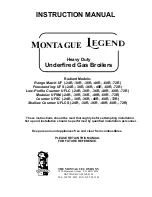
0020277262_02 ecoFIT sustain Installation and maintenance instructions
19
7.4
Heating water supply in the sealed heating
system
TEMPORARY
CONNECTION
HOSE
UNION
HOSE
UNION
SUPPLY
PIPE
CONTROL
VALVE
CONTROL
VALVE
DOUBLE
CHECK
VALVE
HEATING
CIRCUIT
DRAIN
POINT
BOILER
RETURN
FLOW
Method 1
SUPPLY
PIPE
AIR GAP
TUNDISH
CONTROL
VALVE
CONTROL
VALVE
TYPE CA BACKFLOW
PREVENTION DEVICE
BOILER
RETURN
FLOW
HEATING
CIRCUIT
DRAIN
POINT
Method 2
A safety valve must be fitted to a sealed system. It shall be
preset, non-adjustable with a lift pressure of 3 bar, incorpor-
ating seating of a resilient material, a test device and a con-
nection for drain. The drain from the safety valve must be
routed outside the building, must not discharge above an en-
trance or window or any type of public access area, be clear
of any electrical fittings and positioned so that any discharge
can be seen.
A diaphragm type expansion vessel, conforming to the cur-
rent issue of BS 4814 (see also BS 7074 Part 1 and 2) must
be connected at a point close to the inlet side of the circu-
lating pump, see the diagrammatic layout, above unless laid
down differently by the manufacturer. The expansion ves-
sel volume depends on the total water system volume and
the initial system design pressure. For any system an ac-
curate calculation of vessel size is given in the current is-
sue of BS 5449 and BS 7074 Part 1. Example: For an initial
design pressure of 0.7 bar, the minimum total vessel volume
required is 0.063 x Total System Volume.
Note
A higher initial design pressure requires a larger
volume expansion vessel.
In GB, guidance on vessel sizing is also given in the cur-
rent issue of BS 5449 and BS 7074 Part 1. In IE refer to the
current edition of I.S. 813 “Domestic Gas Installations”. The
charge pressure must not be less than the static head of the
system, that is, the height of the highest point of the system
above the expansion vessel.
A pressure gauge with a set pointer and covering at least
0 to 4 bar (0 to 60 lb/in
2
) shall be fitted permanently to the
system in a position where it can be seen when filling the
system.
7.5
Connecting the heating flow and heating
return
2
1
1
Heating return connec-
tion
2
Heating flow connection
1.
Establish the heating connections in accordance with
the applicable standards.
2.
Check whether the connections (
Page 29) are leak-
tight.
7.6
Check compliance with the local gas group
The product's combustion has been factory tested and is
preset for operation with the gas group indicated on the data
plate.
The product is only authorised to be operated with natural
gas.
▶
Check the information about the gas type indicated on
the data plate and compare this with the gas type avail-
able at the installation site.
Condition
: The product design
is not compatible
with the local gas group
▶
Do not start up the product.
Condition
: The product design
is compatible
with the local gas group
▶
Proceed as described below.
















































